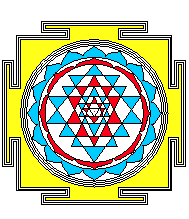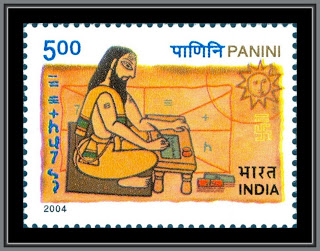The Sanskrit Heritage Site

Version 3.69 [2025-06-10] (fr)
Welcome to the Sanskrit Heritage site. It provides various services for the computational treatment of Sanskrit.
The first service is dictionary access. The dictionary is a hypertext structure
giving access to the Sanskrit lexicon, given with grammatical information.
There are currently two versions of the dictionary.
The first one is the original Heritage Sanskrit-French dictionary, that
serves as morphology generator, and is thus fully equipped with grammatical
tools. Furthermore it offers a rich encyclopedic contents about Indian culture.
You may also download a printable pdf version of this dictionary, as
explained below. A fully hypertext version in the
Goldendict format is also available.
The second lexicon is a digital version of the Monier-Williams Sanskrit-English dictionary, a much more complete lexicon for the Sanskrit language. It is issued from Thomas Malten's digitalization of the Monier-Williams at Köln University, turned into an XML databank by Jim Funderburk, and finally adapted to the HTML Heritage look and feel by Pawan Goyal. The Sanskrit Heritage dictionary is thus mirrored in the Monier-Williams, which allows compatibility of the grammatical tools.
The choice of the dictionary is set to Heritage by default by accessing the standard entry page "sanskrit.inria.fr", but is set to Monier-Williams if you rather invoke "https://sanskrit.inria.fr/index.en.html" Each dictionary is accessible separately by its search page, respectively Sanskrit Heritage and Monier-Williams.
This site offers a number of linguistic services for the Sanskrit language, such as a Sanskrit Reader that parses Sanskrit text under various formats into Sanskrit banks of tagged hypertext. Various phonological and morphological tools are also provided.
Please visit the Reference manual for learning how to use the various facilities.
An elementary Sanskrit course for beginners, using the site resources,
may be found in its French version
ici and in its English version
here.
It allows you to read and understand a simple text, extracted from the
Vikramacarita story. An updated version of the English lesson is available
here.
!!! NEW !!! The story of Nala, taken from the 3rd book of Mahābhārata, is now available in the Corpus repository, section Nala. Its French translation is available here as the second lesson on using our tools.
A more extensive course on using Hypertext Sanskrit Tools, developed jointly with the Sanskrit Studies Department of the University of Hyderabad, was taught remotely in Spring 2024. Its video contents may be accessed here.
Sanskrit Heritage dictionary in book form
You may download the Heritage dictionary as a pdf document from PDF. This document is readable through Acrobat Reader, a well-known document management software from Adobe freely available on Internet. Since the document is rather large, you have to account for some delay in loading its 5 Mb. This is a still on-going effort, lexical acquisition implies quick obsolescense of this document which grows along with versions.The Sanskrit Heritage dictionary is also available in an older version, in an ebook format, usable with the Babyloo, Stardict or Goldendict software. Please visit the Golden Sanskrit Heritage page.
Multilingual hyper-text dictionary
Interactive browsing
The dictionary may be accessed through an indexing engine: Héritage du sanskrit for the French dictionary, or Monier-Williams for the English one.
Your browser must be HTML5 compliant, and for proper viewing of Sanskrit text you must have installed on your system open type fonts for roman transliteration with diacritics, and for devanāgarī. A Unicode-compliant font for devanāgarī with proper ligatures is Apple's Devanagari MT for Macintosh OS X stations. For Windows users, installation of font 'Arial MS Unicode' is advised for proper rendering.
Note that many words are given with their etymology as hypertext links. You may thus navigate from a word to its morphological components, down to its roots. Also, the gender declarations of the main entries are mouse-sensitive, and give you direct access to the relevant declension table. Similarly, the present class mark of the verbal roots gives access to the conjugation schemes. Also for verb entries, preverbs lead you to the correspondingly prefixed derived verbs.
All these grammatical tools, originally developed for the Heritage dictionary, are being progressiveley extended to the Monier-Williams dictionary. Thus our HTML Monier-Williams offers similar declension and conjugation facilities.
Sanskrit made easy
If you want to search for a Sanskrit word without knowing its exact transliteration, go to section "Sanskrit made easy" of the index page, which allows you to search for words without knowing precise diacritics usage. For instance, search Vishnou, Siva, or the grammarian Panini. This interface is limited for the moment to the Sanskrit Heritage dictionary.
Sanskrit Grammarian

This interface gives the declension tables for Sanskrit substantives. Try out this declension engine by submitting Sanskrit stems with intended gender. The same transliteration conventions as for the dictionary index apply. For instance, submit "deva" with gender Mas, or (assuming Velthuis transliteration) "devii" with gender Fem, or "brahman" with gender Neu. The fourth button, labeled "Any", may be used for the words which take their gender from the context, such as deictic personal pronouns ("aham", "tvad"), or numeral words such as "dva", "tri", etc.
A conjugation engine for roots is also available. It handles the full present system: present indicative, imperfect, imperative and optative, as well as the passive present system, the perfect, the aorist and the future. Participial stems, absolutives and infinitives are listed as well. Some secondary conjugations (causative, intensive, desiderative) are also generated, for the full present and future systems. Try out this conjugation engine with data such as "bhuu" 1, "as" 2, "m.rj" 2, "han" 2, "haa" 3, "hu" 3, "daa" 4, "su" 5, "p.r" 6, "yuj" 7, "k.r" 8, "j~naa" 9, "cur" 10, "namas" 11. You may cascade by generating declensions of the generated participial stems.
A word of caution is called for here. The only safe way to get correct inflected forms is to enter the stem and its morphological parameters consistently with their specification in the Heritage dictionary. This is specially true of roots, since they appear with various names according to Sanskrit grammars. For instance, root hū is called hū, hvā or hve according to various grammarians. Another problem is homophony. When two items have the same phonetic realization, their respective lexemes are disambiguated by an integer index, which is specific to the lexicon. Thus there are three roots named mā in the Sanskrit Heritage dictionary. They are adressed respectively (in Velthuis transliteration) as maa#1, maa#3 and maa#4. If you ask for the conjugated forms of maa in present classes 2 or 3, the system will guess you mean maa#1 (to measure). But if you mean maa#3 (to mow) or maa#4 (to exchange) you have to enter explicitly their disambiguated stems maa#3 or maa#4. Entering an arbitrary stem and arbitrary morphology parameters may yield random results or error messages.
Lemmatizer
Conversely, a lemmatiser attempts to tag inflected words. Try for instance (in Velthuis format) "devaat", "jagmivaan", "a.s.tau" (selecting Noun) or "apibat", "akaar.siit", "dudoha", "vaahyate" (selecting Verb). This lemmatizer knows about inflected forms of derived stems in some secondary derivations. For instance, "darzayi.syati" is found as conjugated form: { ca. fut. ac. sg. 3 }[dṛś_1], "dariid.rzyate" yields { int. pr. md. sg. 3 }[dṛś_1], "did.rk.sate" yields { des. pr. md. sg. 3 }[dṛś_1] and "bibhik.se" yields { des. pft. md. sg. 3 | des. pft. md. sg. 1 }[bhaj]. Please note the multitag notation of this ambiguous form.
Other lexical categories are available, such as Part for participles. For instance, "bhikṣitavyānām" (selecting IAST transliteration and the Part lexical category), yields { g. pl. f. | g. pl. n. | g. pl. m. }[bhikṣitavya { des. pfp. [3] }[bhaj]].The various grammatical abbreviations used in these lemmas are available here. N.B. Do not attempt to lemmatize verbal forms with preverbs - this will not work, it knows only how to invert root forms. Lemmatizing more complex forms is possible through the Sanskrit Reader interface, as explained in the manual.
Morphology
A dictionary of inflected forms of Sanskrit words is provided in XML form under various transliteration schemes. Please visit the Sanskrit linguistic resources page.Sanskrit Reader
The main tool provided by this site is a Sanskrit Reader that allows machine-assisted analysis of Sanskrit sentences, that is segmentation (including sandhi viccheda), morphological tagging, and several parsers. Please consult the Reference manual for learning how to use these tools.
 The Zen Library
The Zen Library
This site reflects an ongoing project of Sanskrit processing on a comprehensive software platform. The project is based on a structured lexicographic database, compiled from the Sanskrit Heritage dictionary, and on the Zen computational linguistics toolkit. This toolkit is a library of programs implemented in the Objective Caml programming language. The Zen library and its documentation are available as free software under the Gnu Lesser General Public License (LGPL) from the Zen gitlab site.
